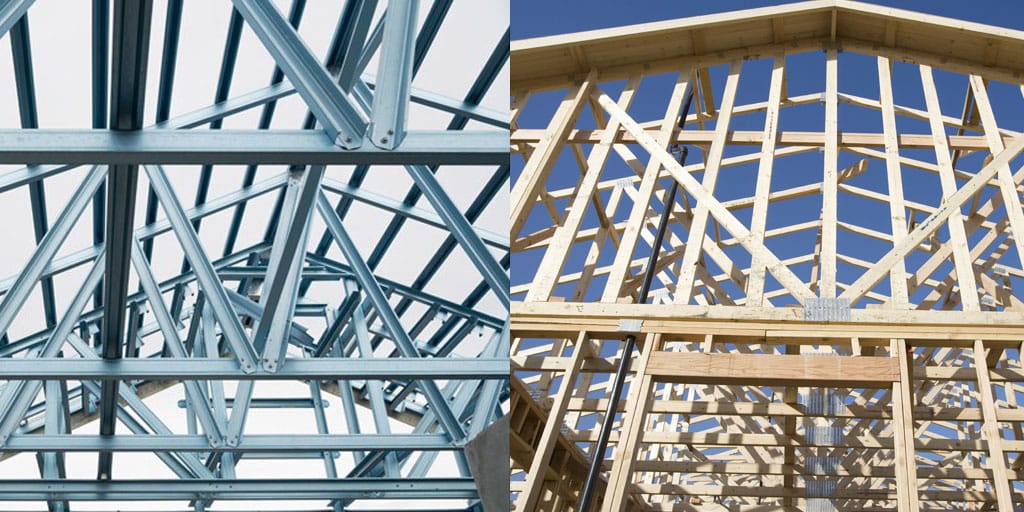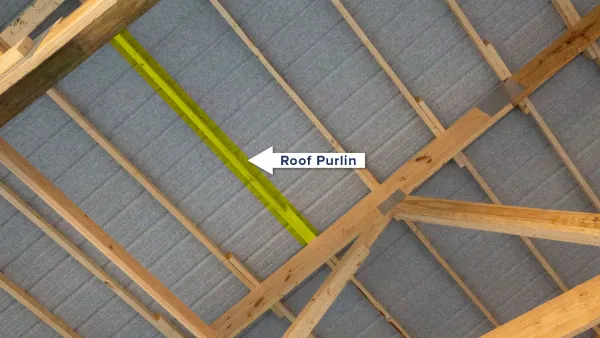So, you’re building a house and wondering whether to go timber or steel for the frame. It’s an important choice that will impact how much you spend on heating and cooling over the lifetime of your home.
Both options have come a long way in recent years with new materials and designs that improve energy efficiency. As an Aussie home owner, this decision can feel overwhelming with all the options and opinions out there. But don’t stress, we’ve done the research to determine what really matters for energy savings down under.
Whether you prefer the natural warmth of timber or the contemporary sleekness of steel, you’ll want to consider these factors. Read on to find out which building material is the most energy efficient for house framing in Australia based on insulation, thermal mass, and lifetime costs. The choice may surprise you!
Timber Framing vs Steel Framing: The Main Differences
Timber framing and steel framing are two very different beasts, so which is better for an energy efficient home? Let's compare.
Timber: Natural But High Maintenance
Timber, usually pine, is a natural insulator. Its cellular structure traps air and reduces heat transfer. However, timber is prone to warping, twisting and rotting over time if not properly treated and maintained. It requires regular inspections, repairs, and protective coatings like paint to prevent weathering.
While timber framing can achieve high insulation, its sustainability depends on the source. Opt for timber from certified renewable plantations. Timber homes also tend to cost 10-15% more than steel-framed homes.
Steel: Durable Yet Thermally Conductive
Steel framing is very durable and termite-proof but thermally conductive, allowing heat to pass through easily. Additional insulation is needed to prevent energy loss, increasing costs. Steel can also dent, buckle or corrode if not galvanised and coated properly.
Steel-framed homes are cheaper to build but more expensive to heat and cool. They have a higher upfront cost due to the amount of insulation required to match timber's natural performance. However, less maintenance is needed overall.
In the end, both timber and steel have pros and cons for energy efficiency and budget. The right choice depends on your needs, climate, and how long you plan to stay in the home. Think about the long-term costs of heating, cooling as well as maintenance when deciding between these two framing methods.
Which Is Better for Energy Efficiency? Timber vs Steel Performance
When it comes to energy efficiency, timber and steel each have their pros and cons. Let's compare how they stack up.
Timber
Timber is a natural insulator, helping to regulate temperature within the home. The dense cell structure of timber reduces heat transfer through the walls. Timber frame homes typically have 20-30% lower heating and cooling costs compared to conventional homes.
However, timber requires chemical treatment to resist rot, mould and pests, and it's prone to warping or cracking over time. Timber homes also require regular maintenance like painting or staining.
Steel
Steel is extremely durable and weather-resistant, so steel frame homes last longer with little maintenance required. Steel also resists bushfires, termites and mould.
On the downside, steel is an excellent conductor of heat, so additional insulation is needed. Steel frame homes typically have higher heating and cooling costs compared to timber. They are also difficult to modify once constructed.
In the end, while timber may have a slight energy efficiency advantage, both materials can work well when properly insulated. The choice comes down to your priorities - lower environmental impact and naturalness of timber versus the durability and low-maintenance of steel. With good design, either can be an energy efficient and sustainable choice for house framing.
Brick Cladding vs Other Cladding Options: The Pros and Cons
Brick veneer and other cladding options each have their pros and cons when it comes to energy efficiency and cost. Consider the following factors to determine what’s right for your new home.
Maintenance
Brick veneer requires minimal maintenance but can be expensive. Metal cladding like zinc or steel also needs little upkeep. In contrast, timber weatherboards demand frequent painting or staining to prevent damage. Fibre cement boards fall in the middle, needing repainting every 10-15 years. If low-maintenance is a priority, brick veneer or metal sheeting may suit you best.
Insulation
The cladding you choose impacts the level of insulation needed. Brick veneer provides some inherent insulation, so less additional insulation is required. With metal or timber cladding, more insulation is needed to achieve the same energy rating. This can increase building costs. However, installing extra insulation does have long term benefits for heating and cooling bills.
Appearance
For many home owners, appearance is key. Brick veneer and timber weather boards are attractive, natural-looking options. Modern metal cladding also comes in wood grain and masonry-inspired finishes for increased curb appeal. If a sleek, contemporary look is preferred, metal sheeting could be ideal. Fibre cement boards offer a rendered stucco-like appearance when painted.
Cost
Your budget often determines the final choice. Brick veneer is usually the most expensive due to materials and labour costs. Metal sheeting and fibre cement also come at a premium. Timber weather boards are often the most affordable. However, higher maintenance costs and reduced insulation may offset any upfront savings.
Considering all these factors together - low-maintenance, good insulation, appearance and budget - brick veneer or metal cladding are smart, energy efficient choices for Australian homes in the long run. But for some, the character and affordability of timber just can’t be beat. The right option comes down to what matters most for your new home.
Key Factors to Consider for Your Climate and Location
Location, Location, Location
Where you live plays a big role in determining which framing material is most energy efficient for your home. In warmer climates, timber frame wins out for its natural insulation properties. In colder areas, steel frame may be better for reducing heating costs.
If you're in a hot spot, timber frame construction will help keep your home cooler in summer. Wood is an excellent insulator and helps prevent heat transfer into the interior. The thermal mass of timber also helps regulate temperature changes. For homes in tropical Queensland or northern WA, timber frame is ideal for cutting down on air conditioning and improving comfort.
In chillier Southern states like Victoria or Tasmania, steel frame could lower your heating bills. Steel is highly conductive and transfers heat efficiently throughout the structure. In winter, a well-insulated steel frame home will retain heat from appliances, lighting and insulation for longer. The thermal mass of steel also helps stabilise indoor temperatures as the weather outside changes. For snowy Alpine regions, steel frame may result in a warmer, more cost-effective home.
- Consider your local climate and how temperatures fluctuate throughout the year.
- Think about how the framing material's thermal properties could impact your energy usage for heating and cooling.
- Factor in other home design elements like insulation, windows, ventilation and heating/cooling systems that will work together with the frame.
- Discuss options with an architect or builder to determine the best choice for your home and location.
Every region has its pros and cons for different building methods. By taking into account your local weather conditions and how they interact with the thermal performance of each framing material, you can make the choice that suits your needs for an energy efficient home. Whether you opt for timber or steel, make sure to maximise insulation and incorporate passive solar design for optimal energy savings.
Maximising Energy Savings: Tips for Your Timber or Steel Framed Home
To maximise energy savings in your timber or steel framed home, follow these tips:
Insulation
Installing adequate insulation, especially in the walls and attic, is key. The more insulation you have, the less energy you’ll need for heating and cooling. aim for at least R-10 insulation in the attic and R-10 in exterior walls.
Windows
Choose energy efficient windows, ideally double or triple-glazed windows. Look for a low U-factor, which measures how much heat can pass through. The lower the U-factor, the less energy is lost. Windows are a major source of heat transfer, so upgrades can significantly improve efficiency.
Weather stripping
Weather stripping seals air leaks around doors, windows, ceiling spaces, basements, etc. Apply weather stripping tape, seals or door sweeps to prevent heat loss from drafts. This simple step can improve your home’s energy efficiency by up to 20% and is inexpensive.
Programmable thermostat
A programmable thermostat can automatically lower the temperature when you're away or sleeping to reduce energy usage. It allows you to closely control the indoor climate for maximum comfort when home. Choose a model with multiple programming options so you can adjust the schedule for weekdays, weekends and holidays.
Energy monitor
Installing an energy monitor allows you to track how much power your home is using so you can make adjustments to improve efficiency. Many models connect to your utility metre and provide real-time data on energy usage, cost and greenhouse gas emissions. They make you aware of wastage so you can cut back and save.
Following these useful tips for maximising energy efficiency in your timber or steel framed home will help lower your utility bills, increase comfort and benefit the environment. Making upgrades and changes may require an initial investment, but the long term savings and peace of mind will be well worth it.
Conclusion
While steel promises exceptional thermal performance and durability, timber just feels right for many. As with most big decisions, it comes down to what’s most important to you. If zeroing out your energy bills and an indestructible home are top priorities, steel could be the way to go. But if you value natural materials and the character of wood, timber framing may tug at your heartstrings.
At the end of the day, you have to weigh up all the factors and go with what lets you rest easy at night in your cosy new home. The good news is, either way, you’ll end up with an energy efficient house built to stand the test of time. The choice is yours!







